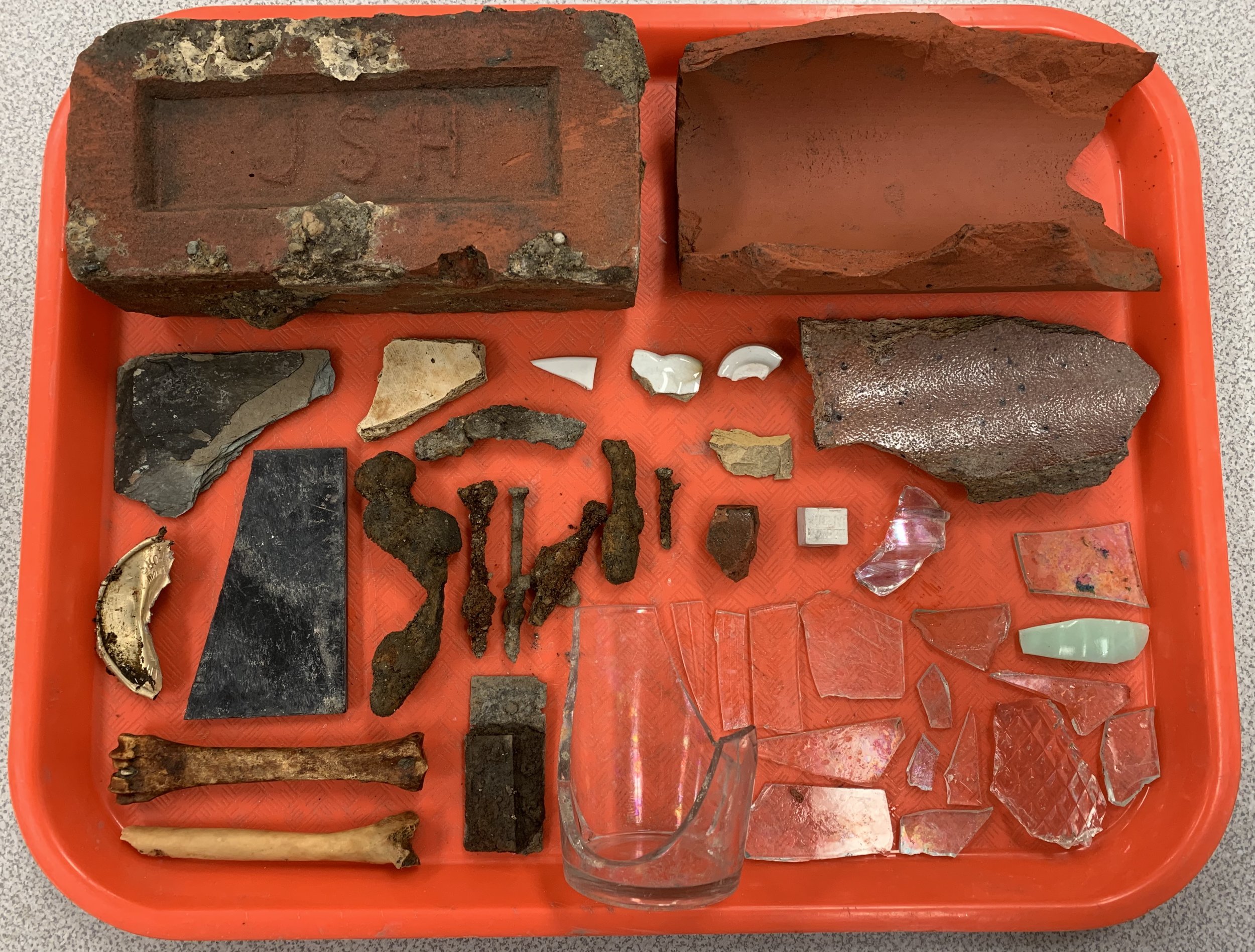Archaeological Monitoring at Wayne State's David Mackenzie House
Last spring, Wayne State University archaeologists were on hand to monitor as construction crews dug out the foundations of the David Mackenzie House in preparation for its big move around the corner to Second and Forest.
International Chimney was hired by the university, the same firm that moved the Gem Theatre in 1997. The heavy machinery revealed the original builder’s trenches along the foundation of the house. With permission from Wayne State University Planning and Facilities, the archaeologists also recovered an assortment of artifacts, including ceramic shards, architectural materials, glassware, iron nails, and animal bones related to past activities at the house site.
When archaeological deposits are known or anticipated in an area, archaeologists are often called to observe as construction crews dig to ensure that cultural resources are not inadvertently disturbed or destroyed in the process. If the archaeologist sees something that might be significant, they will signal to the crew to pause their work and will go inspect the materials. Once the archaeological data is recovered, construction can start up again.
This ensures that any potential archaeological resources are recorded while working quickly to get construction back on track. Under certain conditions, monitoring is required for construction projects working on public land in order to comply with federal and state historic preservation laws.
As we wait for the university to return the house to a permanent foundation, archaeologists and other concerned community members continue to monitor the house for a successful move.



